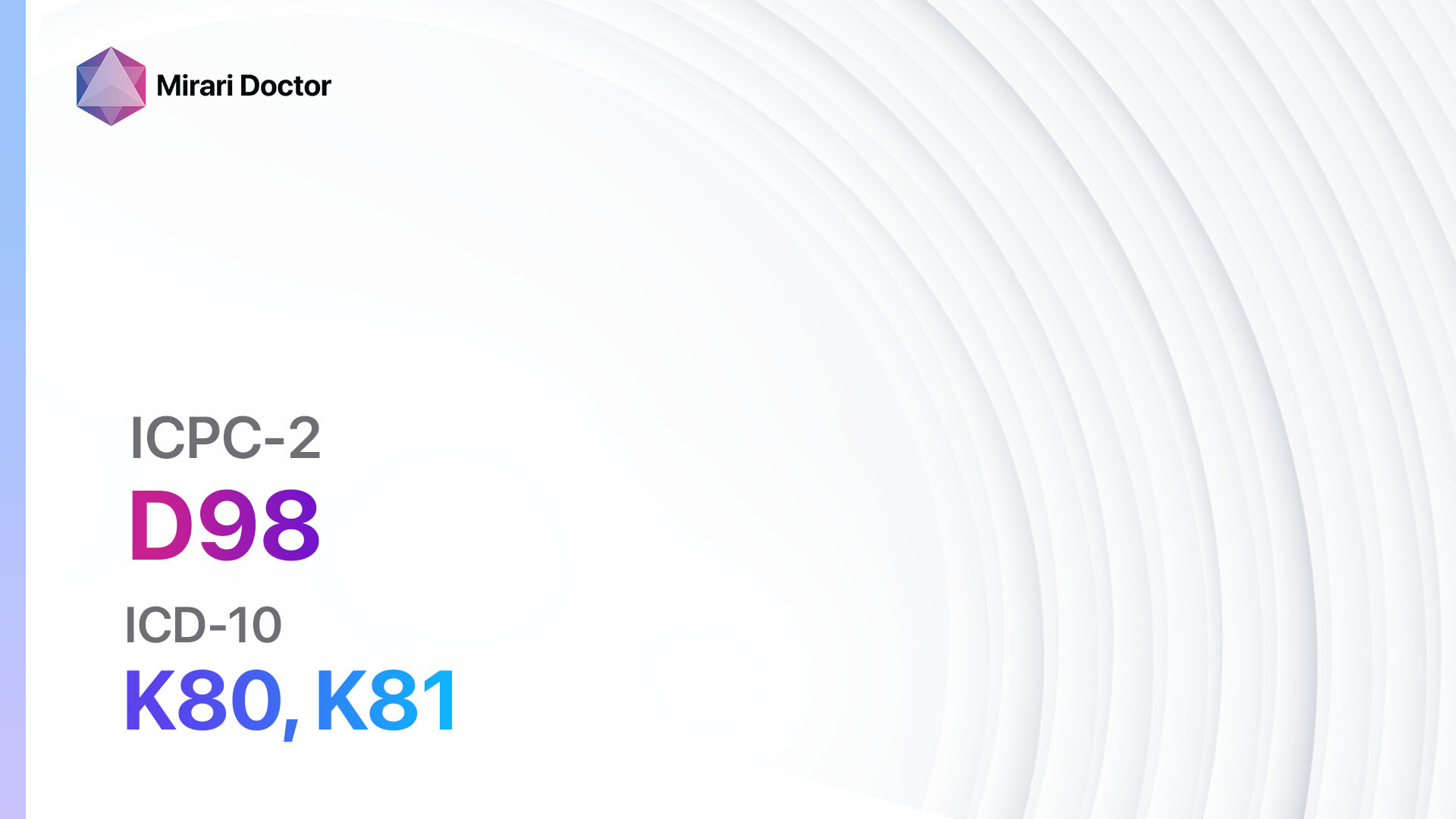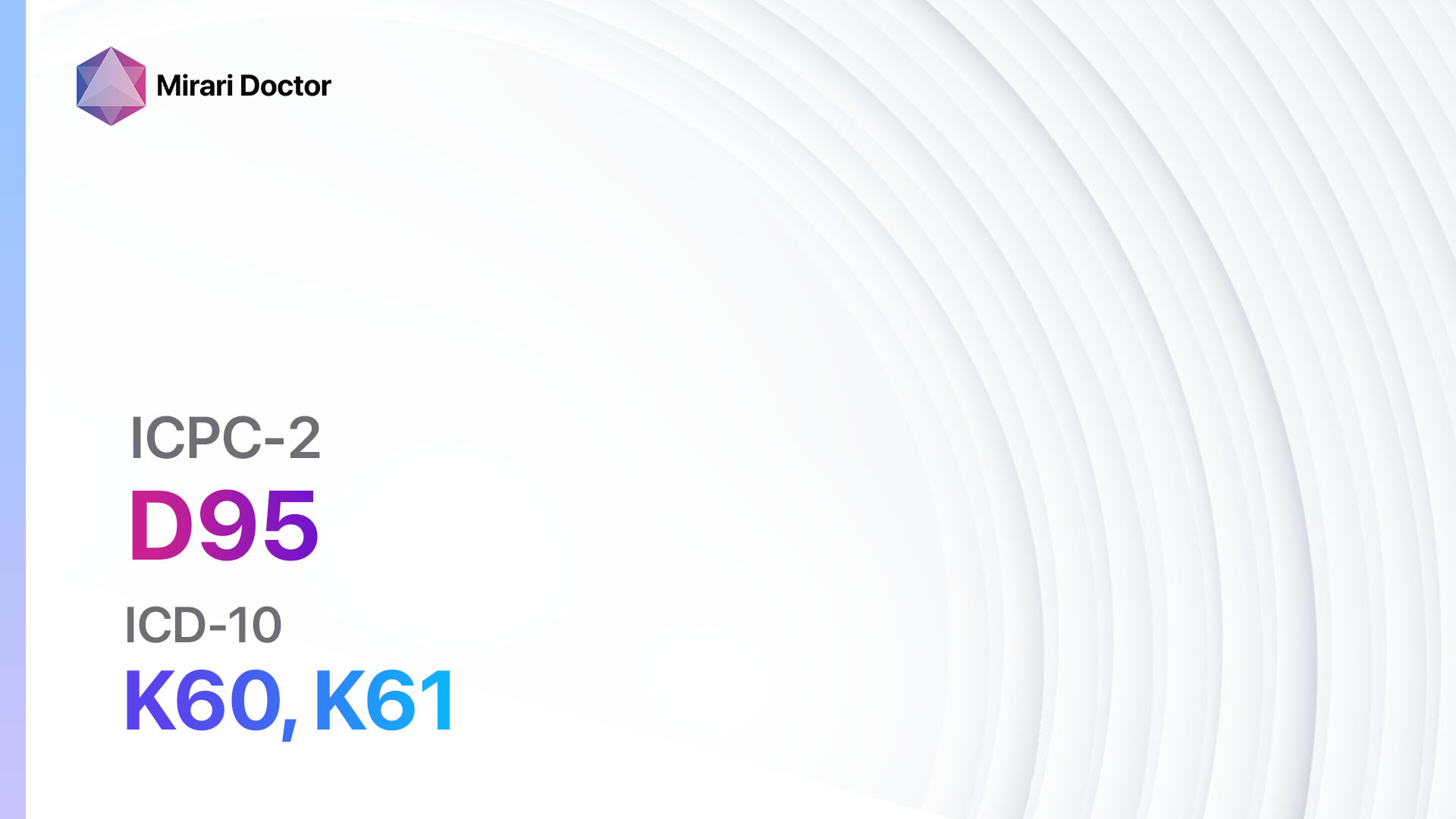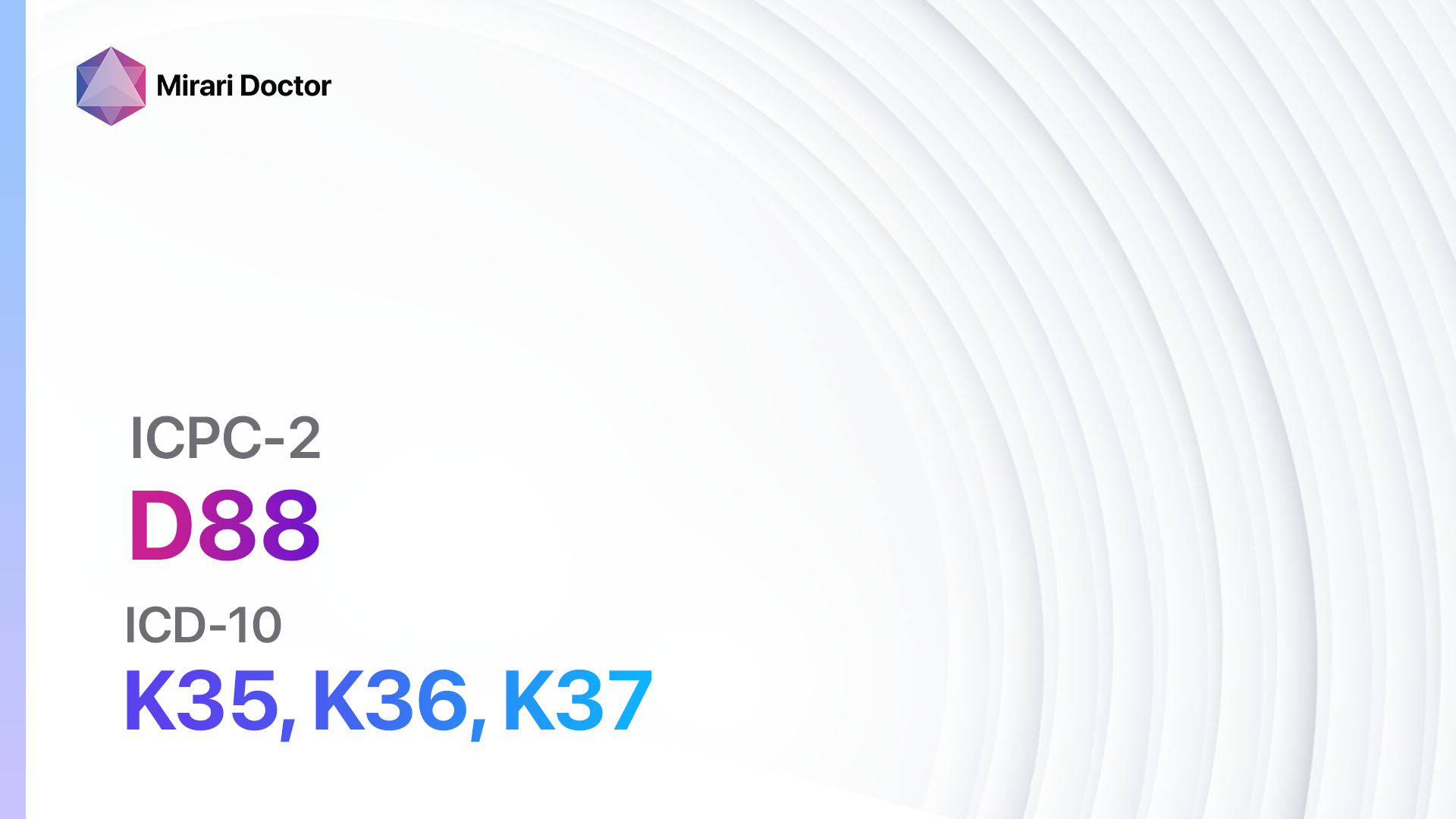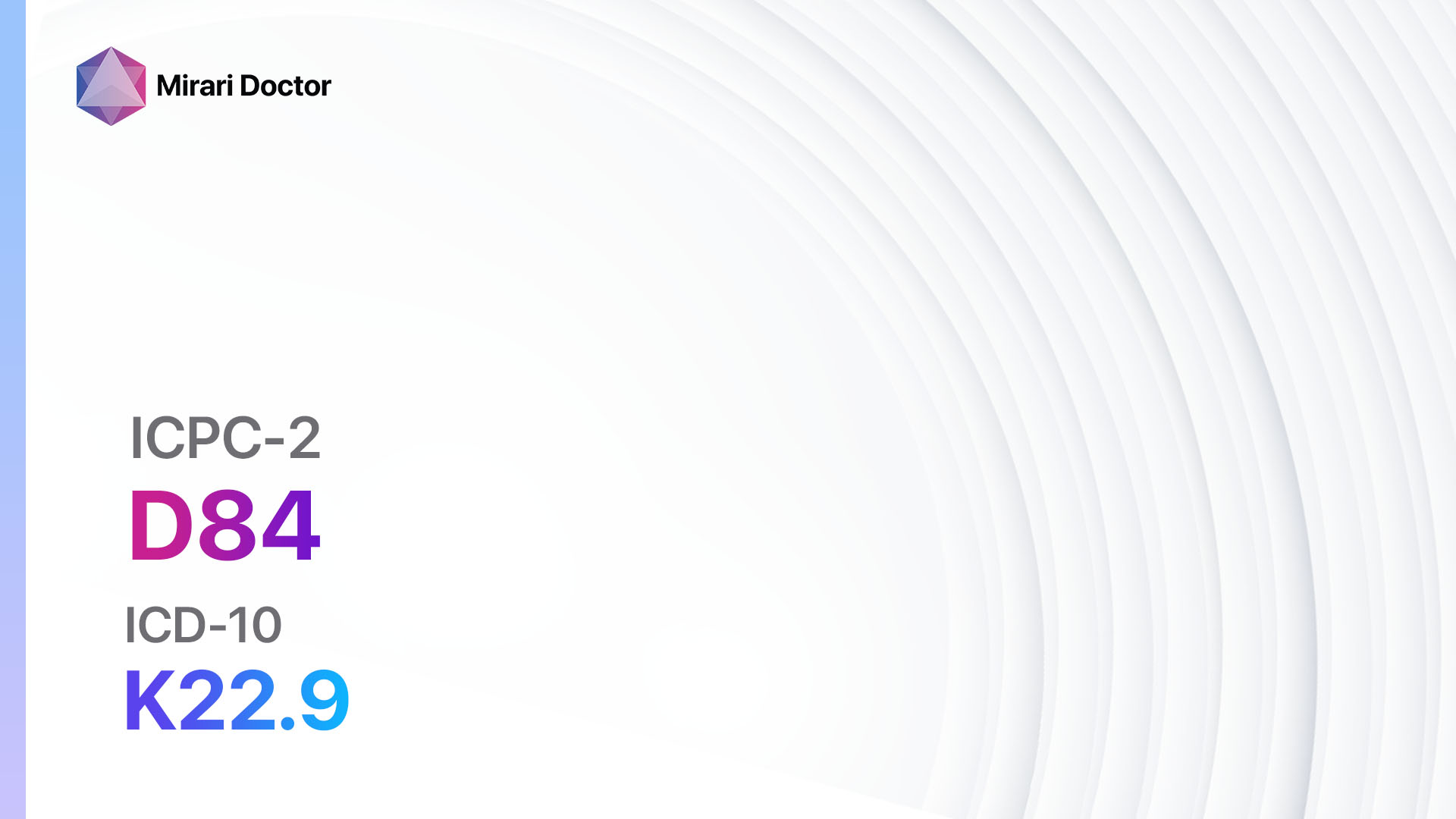
Introduction
Teeth and gum symptoms or complaints can be indicative of various dental and oral health conditions. These symptoms can range from mild discomfort to severe pain and can be caused by a variety of factors[1]. This guide aims to provide a comprehensive overview of the symptoms, causes, diagnostic steps, possible interventions, and patient education related to teeth and gum symptoms/complaints.
Codes
- ICPC-2 Code: D19 Teeth/gum symptom/complaint[2]
- ICD-10 Code: K08.9 Disorder of teeth and supporting structures, unspecified[3]
Symptoms
- Toothache: Persistent or intermittent pain in the tooth or surrounding area[4].
- Gum swelling: Inflammation and enlargement of the gums[5].
- Gum bleeding: Bleeding from the gums, especially during brushing or flossing[6].
- Tooth sensitivity: Increased sensitivity to hot, cold, or sweet foods and beverages[7].
- Bad breath: Persistent unpleasant odor from the mouth[8].
- Loose teeth: Teeth that feel loose or shift in position[9].
- Gum recession: Gradual loss of gum tissue, exposing the tooth roots[10].
- Pus discharge: Presence of pus around the tooth or gums.
- Difficulty chewing or biting: Discomfort or pain while chewing or biting down.
- Jaw pain: Pain or discomfort in the jaw joint or muscles.
Causes
- Dental caries (tooth decay): Bacterial infection that causes the destruction of tooth structure.
- Gum disease (periodontal disease): Infection and inflammation of the gums and supporting structures of the teeth.
- Tooth abscess: Collection of pus within the tooth or gums.
- Tooth fracture: Breakage or cracking of the tooth structure.
- Tooth sensitivity: Exposed tooth roots or worn enamel.
- Poor oral hygiene: Inadequate brushing, flossing, and regular dental check-ups.
- Trauma or injury to the teeth or gums.
- Malocclusion (misalignment of teeth): Crowding, spacing, or bite problems.
- Bruxism (teeth grinding): Excessive clenching or grinding of teeth.
- Oral infections: Viral, bacterial, or fungal infections in the mouth.
Diagnostic Steps
Medical History
- Gather information about the patient’s dental and medical history.
- Inquire about the duration, severity, and progression of symptoms.
- Ask about any recent trauma or injury to the teeth or gums.
- Assess the patient’s oral hygiene practices.
- Identify any underlying medical conditions or medications that may contribute to dental symptoms.
Physical Examination
- Examine the teeth and gums visually for signs of decay, inflammation, or other abnormalities.
- Palpate the gums and surrounding tissues for tenderness, swelling, or abscesses.
- Check for loose teeth or abnormal tooth mobility.
- Evaluate the bite and occlusion for any misalignment or malocclusion.
- Assess the jaw joint and muscles for any signs of temporomandibular joint disorder (TMJ).
Laboratory Tests
- Complete blood count (CBC): To assess for any signs of infection or systemic inflammation.
- Oral swab culture: To identify the presence of specific bacteria or fungi causing oral infections.
- Salivary tests: To evaluate saliva composition and flow rate, which can affect oral health.
Diagnostic Imaging
- Dental X-rays: To visualize tooth decay, abscesses, fractures, or bone loss.
- Cone beam computed tomography (CBCT): 3D imaging for detailed assessment of dental and facial structures.
- Panoramic X-ray: To evaluate the overall dental and jaw structures.
- Magnetic resonance imaging (MRI): To assess the temporomandibular joint (TMJ) and surrounding structures.
Other Tests
- Periodontal probing: Measurement of pocket depths around the teeth to assess gum disease severity.
- Bite analysis: Evaluation of the bite and occlusion using articulating paper or digital sensors.
- Transillumination: Use of a light source to detect cracks or fractures in teeth.
- Biopsy: Removal of a small tissue sample for laboratory analysis in cases of suspected oral lesions or tumors.
Follow-up and Patient Education
- Schedule regular dental check-ups and cleanings.
- Educate the patient about proper oral hygiene practices, including brushing, flossing, and tongue cleaning.
- Provide instructions on diet and nutrition for optimal oral health.
- Discuss the importance of avoiding tobacco use and excessive alcohol consumption.
- Emphasize the need for prompt treatment of dental issues to prevent complications.
Possible Interventions
Traditional Interventions
Medications:
Top 5 drugs for teeth/gum symptoms/complaints:
- Nonsteroidal anti-inflammatory drugs (NSAIDs) (e.g., Ibuprofen, Naproxen):
- Cost: Generic versions can be $3-$20/month.
- Contraindications: Active peptic ulcer disease, history of gastrointestinal bleeding, allergy to NSAIDs.
- Side effects: Upset stomach, heartburn, increased risk of bleeding.
- Severe side effects: Severe allergic reactions, kidney damage, liver damage.
- Drug interactions: Blood thinners, certain blood pressure medications.
- Warning: Prolonged use may increase the risk of cardiovascular events.
- Antibiotics (e.g., Amoxicillin, Metronidazole):
- Cost: Generic versions can be $5-$30/month.
- Contraindications: Allergy to antibiotics, certain medical conditions.
- Side effects: Upset stomach, diarrhea, allergic reactions.
- Severe side effects: Severe allergic reactions, antibiotic resistance.
- Drug interactions: Certain medications, including oral contraceptives.
- Warning: Complete the full course of antibiotics as prescribed.
- Topical anesthetics (e.g., Benzocaine, Lidocaine):
- Cost: Varies depending on the specific product.
- Contraindications: Allergy to local anesthetics, certain medical conditions.
- Side effects: Temporary numbness, allergic reactions.
- Severe side effects: Rare, but may include severe allergic reactions.
- Drug interactions: None significant.
- Warning: Follow the instructions for use and avoid excessive application.
- Antifungal medications (e.g., Nystatin, Clotrimazole):
- Cost: Generic versions can be $5-$20/month.
- Contraindications: Allergy to antifungal medications, certain medical conditions.
- Side effects: Skin irritation, allergic reactions.
- Severe side effects: Rare, but may include severe allergic reactions.
- Drug interactions: None significant.
- Warning: Use as directed and complete the full course of treatment.
- Mouth rinses (e.g., Chlorhexidine, Hydrogen peroxide):
- Cost: Varies depending on the specific product.
- Contraindications: Allergy to mouth rinse ingredients, certain medical conditions.
- Side effects: Temporary discoloration of teeth, altered taste sensation.
- Severe side effects: Rare, but may include severe allergic reactions.
- Drug interactions: None significant.
- Warning: Use as directed and avoid swallowing the rinse.
Alternative Drugs:
- Oral corticosteroids (e.g., Prednisone): Used for severe inflammation or allergic reactions.
- Antiviral medications (e.g., Acyclovir): Used for viral infections such as herpes.
- Antihistamines (e.g., Diphenhydramine): Used for allergic reactions or itching.
- Saliva substitutes (e.g., Artificial saliva): Used for dry mouth symptoms.
- Antacids (e.g., Calcium carbonate): Used for acid reflux-related symptoms.
Surgical Procedures:
- Tooth extraction: Removal of a severely decayed or damaged tooth. Cost: $75-$450 per tooth.
- Root canal therapy: Removal of infected pulp and filling of the root canal. Cost: $300-$2,000 per tooth.
- Gum surgery: Surgical procedures to treat gum disease or reshape the gums. Cost: $500-$10,000.
- Dental implants: Placement of artificial tooth roots to support dental prostheses. Cost: $1,000-$4,000 per implant.
- Orthognathic surgery: Corrective jaw surgery to address bite problems or facial deformities. Cost: $20,000-$40,000.
Alternative Interventions
- Oil pulling: Swishing oil (e.g., coconut oil) in the mouth to reduce bacteria and improve oral health. Cost: Minimal (cost of oil).
- Herbal mouth rinses: Rinsing with herbal solutions (e.g., sage, chamomile) to reduce inflammation and promote healing. Cost: Varies depending on the herbs used.
- Probiotics: Consuming probiotic supplements or foods to promote a healthy oral microbiome. Cost: Varies depending on the product.
- Saltwater rinses: Rinsing with warm saltwater to reduce inflammation and promote healing. Cost: Minimal (cost of salt).
- Aloe vera gel: Applying aloe vera gel topically to soothe gum inflammation. Cost: Minimal (cost of aloe vera gel).
Lifestyle Interventions
- Proper oral hygiene: Regular brushing (at least twice a day), flossing, and tongue cleaning. Cost: Minimal (cost of oral hygiene products).
- Dietary modifications: Reducing sugar intake, increasing water consumption, and consuming a balanced diet rich in fruits and vegetables. Cost: Varies depending on dietary choices.
- Stress management: Practicing stress-reducing techniques (e.g., meditation, yoga) to minimize teeth grinding and jaw clenching. Cost: Minimal (cost of stress management resources).
- Smoking cessation: Quitting smoking or tobacco use to improve oral health. Cost: Varies depending on smoking cessation methods.
- Regular dental check-ups: Scheduling routine dental visits for professional cleanings and early detection of dental issues. Cost: Varies depending on dental insurance coverage.
It is important to note that the cost ranges provided are approximate and may vary depending on the location and availability of the interventions.
Mirari Cold Plasma Alternative Intervention
Understanding Mirari Cold Plasma
- Safe and Non-Invasive Treatment: Mirari Cold Plasma is a safe and non-invasive treatment option for various skin conditions. It does not require incisions, minimizing the risk of scarring, bleeding, or tissue damage.
- Efficient Extraction of Foreign Bodies: Mirari Cold Plasma facilitates the removal of foreign bodies from the skin by degrading and dissociating organic matter, allowing easier access and extraction.
- Pain Reduction and Comfort: Mirari Cold Plasma has a local analgesic effect, providing pain relief during the treatment, making it more comfortable for the patient.
- Reduced Risk of Infection: Mirari Cold Plasma has antimicrobial properties, effectively killing bacteria and reducing the risk of infection.
- Accelerated Healing and Minimal Scarring: Mirari Cold Plasma stimulates wound healing and tissue regeneration, reducing healing time and minimizing the formation of scars.
Mirari Cold Plasma Prescription
Video instructions for using Mirari Cold Plasma Device – D19 Teeth/gum symptom/complaint (ICD-10:K08.9)
| Mild | Moderate | Severe |
| Mode setting: 1 (Infection) Location: 0 (Localized) Morning: 15 minutes, Evening: 15 minutes | Mode setting: 1 (Infection) Location: 0 (Localized) Morning: 30 minutes, Lunch: 30 minutes, Evening: 30 minutes | Mode setting: 1 (Infection) Location: 0 (Localized) Morning: 30 minutes, Lunch: 30 minutes, Evening: 30 minutes |
| Mode setting: 2 (Wound Healing) Location: 0 (Localized) Morning: 15 minutes, Evening: 15 minutes | Mode setting: 2 (Wound Healing) Location: 0 (Localized) Morning: 30 minutes, Lunch: 30 minutes, Evening: 30 minutes | Mode setting: 2 (Wound Healing) Location: 0 (Localized) Morning: 30 minutes, Lunch: 30 minutes, Evening: 30 minutes |
| Mode setting:7 (Immunotherapy) Location:1 (Sacrum) Morning:15 minutes, Evening:15minutes | Mode setting:7 (Immunotherapy) Location:1 (Sacrum) Morning:30 minutes, Lunch:30 minutes, Evening:30 minutes | Mode setting:7 (Immunotherapy) Location:1 (Sacrum) Morning:30 minutes, Lunch:30 minutes, Evening:30 minutes |
| Total Morning: 45 minutes approx. $7.50 USD, Evening: 45 minutes approx. $7.50 USD | Total Morning: 90 minutes approx. $15 USD, Lunch: 90 minutes approx. $15 USD, Evening: 90 minutes approx. $15 USD, | Total Morning: 90 minutes approx. $15 USD, Lunch: 90 minutes approx. $15 USD, Evening: 90 minutes approx. $15 USD, |
| Usual treatment for 7-60 days approx. $105 USD – $900 USD | Usual treatment for 6-8 weeks approx. $1,890USD – $2,520 USD | Usual treatment for 3-6 months approx. $4,050 USD – $8,100 USD |
 |
|
Use the Mirari Cold Plasma device to treat Teeth/gum symptom/complaint effectively.
WARNING: MIRARI COLD PLASMA IS DESIGNED FOR THE HUMAN BODY WITHOUT ANY ARTIFICIAL OR THIRD PARTY PRODUCTS. USE OF OTHER PRODUCTS IN COMBINATION WITH MIRARI COLD PLASMA MAY CAUSE UNPREDICTABLE EFFECTS, HARM OR INJURY. PLEASE CONSULT A MEDICAL PROFESSIONAL BEFORE COMBINING ANY OTHER PRODUCTS WITH USE OF MIRARI.
Step 1: Cleanse the Skin
- Start by cleaning the affected area of the skin with a gentle cleanser or mild soap and water. Gently pat the area dry with a clean towel.
Step 2: Prepare the Mirari Cold Plasma device
- Ensure that the Mirari Cold Plasma device is fully charged or has fresh batteries as per the manufacturer’s instructions. Make sure the device is clean and in good working condition.
- Switch on the Mirari device using the power button or by following the specific instructions provided with the device.
- Some Mirari devices may have adjustable settings for intensity or treatment duration. Follow the manufacturer’s instructions to select the appropriate settings based on your needs and the recommended guidelines.
Step 3: Apply the Device
- Place the Mirari device in direct contact with the affected area of the skin. Gently glide or hold the device over the skin surface, ensuring even coverage of the area experiencing.
- Slowly move the Mirari device in a circular motion or follow a specific pattern as indicated in the user manual. This helps ensure thorough treatment coverage.
Step 4: Monitor and Assess:
- Keep track of your progress and evaluate the effectiveness of the Mirari device in managing your Teeth/gum symptom/complaint. If you have any concerns or notice any adverse reactions, consult with your health care professional.
Note
This guide is for informational purposes only and should not replace the advice of a medical professional. Always consult with your healthcare provider or a qualified medical professional for personal advice, diagnosis, or treatment. Do not solely rely on the information presented here for decisions about your health. Use of this information is at your own risk. The authors of this guide, nor any associated entities or platforms, are not responsible for any potential adverse effects or outcomes based on the content.
Mirari Cold Plasma System Disclaimer
- Purpose: The Mirari Cold Plasma System is a Class 2 medical device designed for use by trained healthcare professionals. It is registered for use in Thailand and Vietnam. It is not intended for use outside of these locations.
- Informational Use: The content and information provided with the device are for educational and informational purposes only. They are not a substitute for professional medical advice or care.
- Variable Outcomes: While the device is approved for specific uses, individual outcomes can differ. We do not assert or guarantee specific medical outcomes.
- Consultation: Prior to utilizing the device or making decisions based on its content, it is essential to consult with a Certified Mirari Tele-Therapist and your medical healthcare provider regarding specific protocols.
- Liability: By using this device, users are acknowledging and accepting all potential risks. Neither the manufacturer nor the distributor will be held accountable for any adverse reactions, injuries, or damages stemming from its use.
- Geographical Availability: This device has received approval for designated purposes by the Thai and Vietnam FDA. As of now, outside of Thailand and Vietnam, the Mirari Cold Plasma System is not available for purchase or use.
References
- Hennessy, B. J. (2024). Caries. MSD Manual Professional Edition.//www.msdmanuals.com/professional/dental-disorders/common-dental-disorders/caries
- WONCA. (2005). International Classification of Primary Care, Second edition (ICPC-2).//www.ph3c.org/PH3C/docs/27/000496/0000908.pdf
- ICD-10 Data. (2024). 2024 ICD-10-CM Diagnosis Code K08.9.//www.icd10data.com/ICD10CM/Codes/K00-K95/K00-K14/K08-/K08.9
- Hennessy, B. J. (2024). Caries. MSD Manual Professional Edition.//www.msdmanuals.com/professional/dental-disorders/common-dental-disorders/caries
- Glück, Ulrich ; Gebbers, Jan-Olaf (2000). The Nose As Bacterial Reservoir: Important Differences Between the Vestibule and Cavity. DOI: 10.1097/00005537-200003000-00019
- Henderson, B. ; Wilson, M. (1998). Commensal Communism and the Oral Cavity. DOI: 10.1177/00220345980770090301
- van Helden, J.H. ; Lopatik, D. ; Nave, A. ; Lang, N. ; Davies, P.B. ; Röpcke, J. (2015). High resolution spectroscopy of silane with an external-cavity quantum cascade laser: Absolute line strengths of the ν3 fundamental band at 4.6μm. DOI: 10.1016/j.jqsrt.2014.10.016
- MATSUO, Hiroshi ; SUENAGA, Hanako ; TAKAHASHI, Masatoshi ; SUZUKI, Osamu ; SASAKI, Keiichi ; TAKAHASHI, Nobuhiro (2015). Deterioration of polymethyl methacrylate dentures in the oral cavity. DOI: 10.4012/dmj.2014-089
- Kessels, W. M. M. ; Hoefnagels, J. P. M. ; Boogaarts, M. G. H. ; Schram, D. C. ; van de Sanden, M. C. M. (2001). Cavity ring down study of the densities and kinetics of Si and SiH in a remote Ar-H2-SiH4 plasma. DOI: 10.1063/1.1344911
- Horak, Peter ; Barnett, Stephen M. ; Ritsch, Helmut (2000). Coherent dynamics of Bose-Einstein condensates in high-finesse optical cavities. DOI: 10.1103/PhysRevA.61.033609
Related articles
Made in USA




























